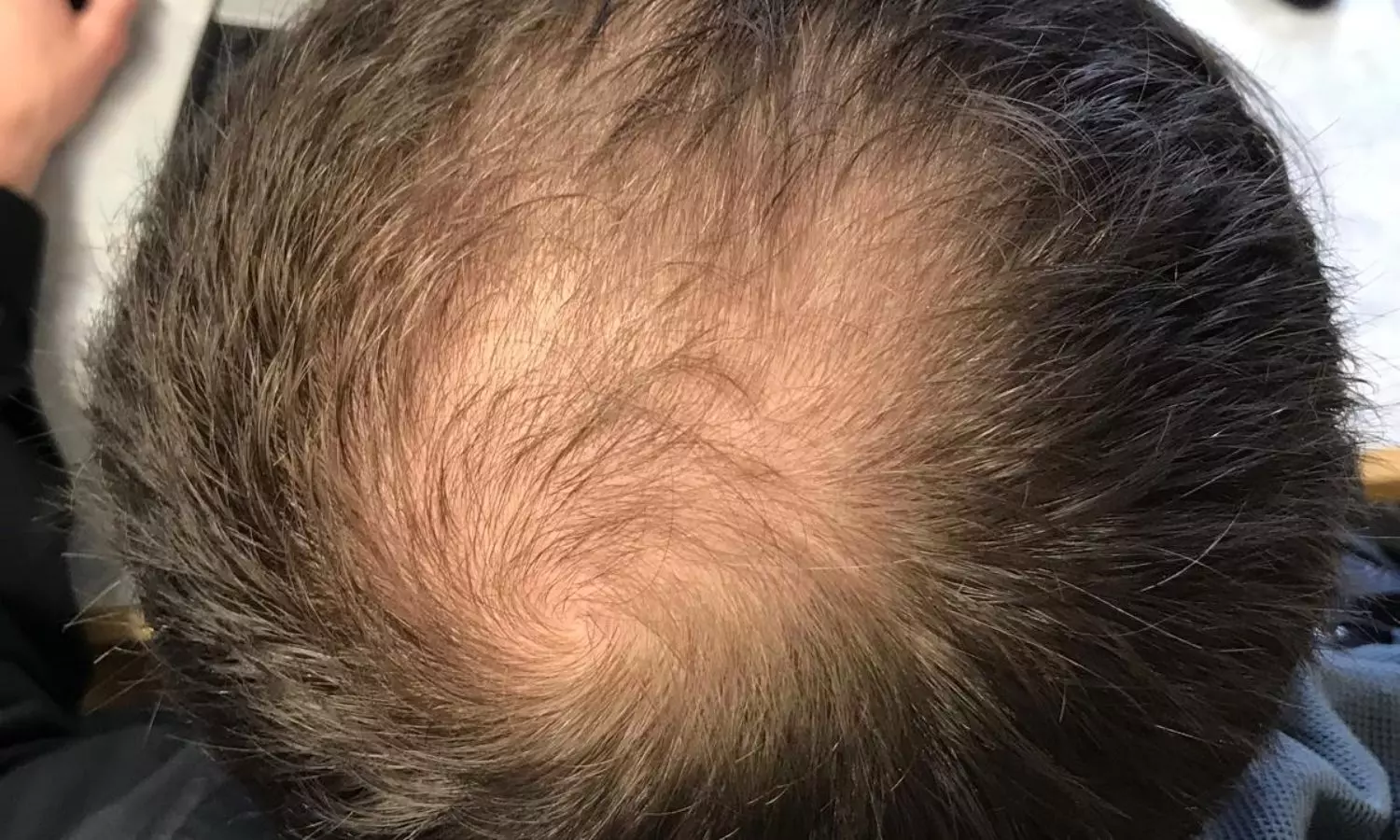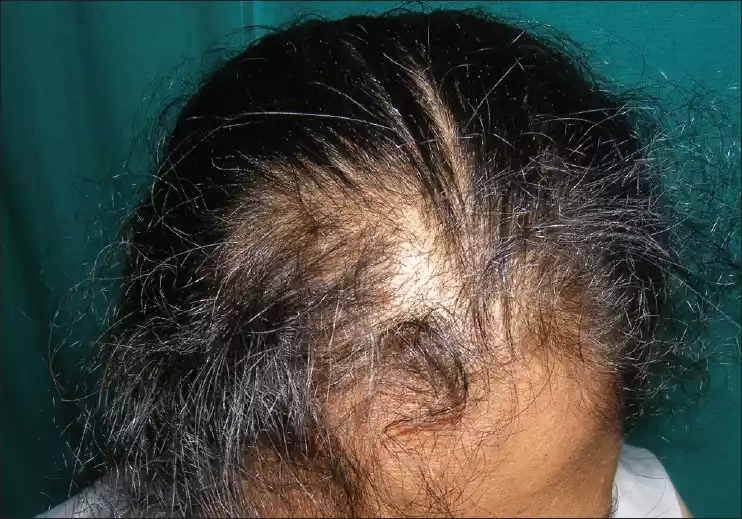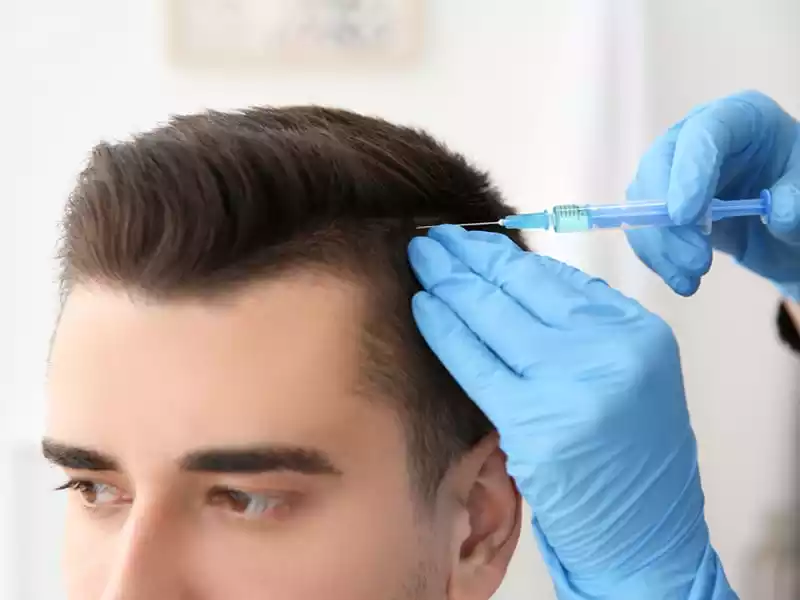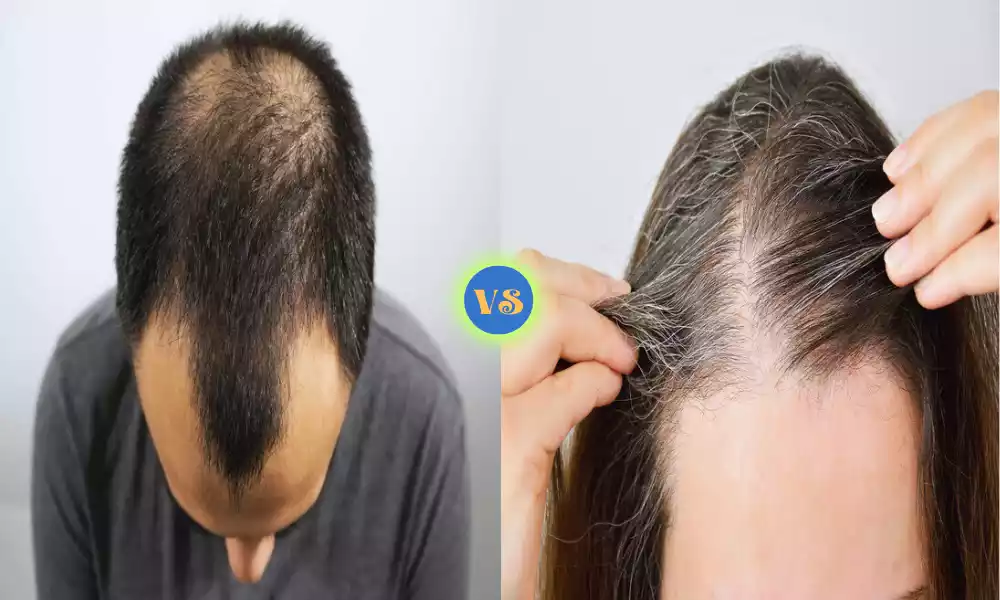Androgenetic Alopecia and Telogen Effluvium are two common forms of hair loss. Androgenetic Alopecia, often known as male-pattern or female-pattern baldness, is primarily genetic and results from the hormone dihydrotestosterone (DHT) shrinking hair follicles. Telogen Effluvium, on the other hand, is often stress-induced and leads to temporary hair loss due to disruptions in the hair growth cycle. Understanding these conditions is essential for effective management and treatment.
What is Androgenetic Alopecia?
Androgenetic Alopecia (AGA), commonly known as male pattern baldness or female pattern baldness, is a hereditary and progressive form of hair loss. It is characterized by the gradual and predictable thinning of hair, typically on the crown and frontal regions of the scalp, in both men and women. AGA is primarily influenced by genetic factors and hormones, particularly dihydrotestosterone (DHT), which causes hair follicles to shrink and produce finer, shorter hair.

Over time, affected hair follicles may become completely inactive, leading to noticeable hair loss and a distinctive pattern of baldness. AGA is the most common cause of hair loss and often requires ongoing management to slow its progression and potentially stimulate hair regrowth.
Causes of Androgenetic Alopecia
The primary cause of Androgenetic Alopecia (AGA) is a combination of genetic and hormonal factors. Here’s a more detailed breakdown of the causes:
-
- Genetic Predisposition: AGA tends to run in families, suggesting a strong genetic component. If your parents or grandparents experienced AGA, you are more likely to develop it as well.
- Hormonal Factors: Hormones, particularly dihydrotestosterone (DHT), play a crucial role in AGA. DHT (dihydrotestosterone, or DHT for short) is a male-specific variant of testosterone hormone that acts as a sexually stimulating sex hormone. In individuals with a genetic predisposition to AGA, hair follicles in certain areas of the scalp are more sensitive to DHT. Over time, exposure to DHT causes hair follicles to shrink (miniaturization), leading to shorter, finer hair growth and eventually hair loss.
- Age: AGA becomes more common as people age. While it can begin in the late teens or early twenties, it is more prevalent in middle-aged and older individuals.
- Gender: AGA is often referred to as male pattern baldness when it affects men and female pattern baldness when it affects women. While it can occur in both sexes, the pattern and progression of hair loss can differ between men and women.
- Hormonal Changes: Hormonal changes, such as those occurring during menopause or pregnancy, can sometimes trigger or exacerbate AGA in women.
- Other Factors: While less common, other factors such as certain medications, medical conditions (like polycystic ovary syndrome), and lifestyle choices (e.g., smoking) may contribute to or accelerate AGA in some individuals.
AGA is a complex condition with multiple contributing factors, and the interplay between genetics and hormones plays a central role in its development. While the exact mechanisms aren’t fully understood, treatments are available to slow its progression and promote hair regrowth. If you suspect you have AGA or are concerned about hair loss, it’s advisable to consult with a healthcare professional or dermatologist for a proper diagnosis and personalized treatment options.
Symptoms and early signs
Symptoms and early signs of Androgenetic Alopecia (AGA) and Telogen Effluvium (TE) can vary, and it’s important to understand the differences between them:
Androgenetic Alopecia (AGA) Symptoms and Early Signs:
-
- Gradual Hair Thinning: The most common early sign of AGA is a gradual thinning of hair, typically starting at the temples or crown in men and the part line in women.
- Receding Hairline (Male Pattern Baldness): In men, AGA often presents as a receding hairline that forms an “M” shape. Hair loss may progress to the top of the scalp, leaving a horseshoe pattern of remaining hair.
- Widening Part Line (Female Pattern Baldness): In women, AGA usually results in widening of the part line and overall thinning of hair without receding hairlines.
- Miniaturization: Hair follicles affected by AGA produce thinner and finer hairs over time, which is known as miniaturization.
- Increased Hair Shedding: While not as prominent as in TE, some individuals with AGA may notice increased hair shedding during washing or combing.
- Visible Scalp: As hair thins, the scalp may become more visible, especially in overhead lighting.
Telogen Effluvium (TE) Symptoms and Early Signs:
-
- Sudden Increase in Hair Shedding: The hallmark of TE is a sudden onset of increased hair shedding. You may notice more hair falling out during showering, brushing, or when running your fingers through your hair.
- Generalized Hair Loss: Unlike the patterned hair loss of AGA, TE typically results in diffuse hair loss across the entire scalp. It doesn’t follow a specific pattern.
- Thinning: TE can lead to noticeable thinning of the hair, but it doesn’t usually lead to baldness like AGA.
- No Receding Hairline or Widening Part Line: TE does not cause receding hairlines or distinct changes in hairline shape.
- Scalp Sensitivity: Some people with TE may experience a sensitive or tingling scalp, especially during the acute phase when hair shedding is most noticeable.
- Hair Regrowth: In many cases, hair regrows once the underlying trigger (e.g., stress, illness, medication) is addressed or resolved. This distinguishes TE from AGA, which typically leads to progressive hair loss without complete regrowth.
It’s important to consult with a healthcare professional or dermatologist if you are experiencing hair loss or changes in your hair density. They can diagnose the underlying cause, whether it’s AGA, TE, or another condition, and recommend appropriate treatment or management strategies based on your specific situation. Early intervention can often yield the best results in managing hair loss.
What is Telogen Effluvium?
Telogen Effluvium (TE) is a temporary and non-scarring form of hair loss characterized by an increased shedding of hair from the scalp. This condition occurs when a significant number of hair follicles prematurely enter the telogen, or resting, phase of the hair growth cycle. As a result, more hair than usual is shed, leading to noticeable thinning of the hair on the scalp.

TE is often triggered by various factors such as physical or emotional stress, illness, nutritional deficiencies, medication side effects, hormonal changes (e.g., childbirth, menopause), or surgery. Unlike some other forms of hair loss, TE is generally reversible and tends to resolve once the underlying cause is addressed.
Causes of Telogen Effluvium
Telogen Effluvium (TE) is a condition characterized by excessive hair shedding and thinning that occurs when a significant number of hair follicles prematurely enter the telogen (resting) phase of the hair growth cycle. Several factors can trigger TE, including:
-
- Physical or Emotional Stress: One of the most common causes of TE is stress, whether it’s physical (e.g., surgery, illness, injury) or emotional (e.g., major life changes, psychological stress). The body’s response to stress can disrupt the normal hair growth cycle, pushing more hair follicles into the telogen phase.
- Dietary Deficiencies: Inadequate intake of essential nutrients, particularly iron, vitamin D, and certain B vitamins, can lead to TE. These nutrients play a crucial role in hair growth, and deficiencies can disrupt the normal cycle.
- Medications: Some medications, especially those that affect hormonal balance or have side effects related to hair loss, can trigger TE. Examples include certain antidepressants, anticoagulants, and medications used to treat hypertension.
- Hormonal Changes: Hormonal fluctuations can cause TE. Common triggers include pregnancy (postpartum hair shedding), childbirth, menopause, and thyroid disorders. Hormonal imbalances alter the hair growth cycle, leading to increased shedding.
- Rapid Weight Loss or Dietary Changes: Crash diets, extreme weight loss, or sudden dietary changes can shock the body and trigger TE. The body prioritizes essential functions over hair growth when it senses a nutritional deficiency.
- Illness and Infections: Acute illnesses, high fevers, and severe infections can temporarily disrupt the hair growth cycle and lead to TE.
- Chronic Medical Conditions: Some chronic health conditions, such as autoimmune diseases (e.g., lupus) and chronic liver or kidney disease, can contribute to TE.
- Hormonal Birth Control or Changes in Birth Control: Switching birth control methods or discontinuing hormonal birth control can lead to hormonal fluctuations that trigger TE in some women.
- Chemotherapy and Radiation: Cancer treatments, including chemotherapy and radiation therapy, can lead to hair loss, which is often reversible once treatment is completed.
- Physical Trauma: Physical trauma to the scalp, such as excessive hairstyling, tight hairstyles (traction alopecia), or hair extensions, can cause TE in some cases.
TE is usually a reversible condition, and once the underlying trigger is addressed or resolved, hair growth typically returns to normal within a few months. It’s essential to consult with a healthcare professional or dermatologist to identify and address the specific cause of TE and rule out other potential underlying conditions.
Recognizing the signs
Recognizing the signs of hair loss, whether it’s Androgenetic Alopecia (AGA) or Telogen Effluvium (TE), is crucial for seeking timely help and appropriate treatment. Here’s how to recognize the signs of each condition:
Recognizing Signs of Androgenetic Alopecia (AGA):
- Gradual Thinning: AGA typically starts with gradual hair thinning, often at the temples or crown in men and the part line in women.
- Receding Hairline (Male Pattern Baldness): Men may notice a receding hairline that forms an “M” shape as hair loss progresses.
- Widening Part Line (Female Pattern Baldness): Women may experience a widening part line and overall thinning of hair without distinct receding hairlines.
- Miniaturization: Over time, hair follicles affected by AGA produce thinner and finer hairs, a process known as miniaturization.
- Increased Hair Shedding: While AGA is characterized by gradual hair loss, some individuals may notice increased hair shedding during washing or combing, although this is usually less pronounced than in TE.
- Visible Scalp: As hair thins, the scalp may become more visible, especially in bright lighting.
Recognizing Signs of Telogen Effluvium (TE):
- Sudden Increase in Hair Shedding: TE is marked by a sudden onset of increased hair shedding. You may notice more hair falling out during showering, brushing, or when running your fingers through your hair.
- Generalized Hair Loss: Unlike the patterned hair loss of AGA, TE results in diffuse hair loss across the entire scalp. It doesn’t follow a specific pattern.
- Thinning: TE can lead to noticeable thinning of the hair, but it typically doesn’t progress to baldness as AGA does.
- No Receding Hairline or Widening Part Line: TE doesn’t cause receding hairlines or distinct changes in hairline shape.
- Scalp Sensitivity: Some people with TE may experience a sensitive or tingling scalp, especially during the acute phase when hair shedding is most noticeable.
- Hair Regrowth: In many cases, hair regrows once the underlying trigger (e.g., stress, illness, medication) is addressed or resolved. This distinguishes TE from AGA, which usually leads to progressive hair loss without complete regrowth.
If you suspect you are experiencing hair loss, it’s essential to consult with a healthcare professional or dermatologist for a proper diagnosis. They can help determine whether it’s AGA, TE, or another form of hair loss and recommend appropriate treatment or management strategies based on your specific situation. Early intervention can often yield the best results in managing hair loss.
Comparison Table of Androgenetic Alopecia and Telogen Effluvium
Here’s a comparison table highlighting the key differences between Androgenetic Alopecia (AGA) and Telogen Effluvium (TE):
| Characteristic | Androgenetic Alopecia (AGA) | Telogen Effluvium (TE) |
|---|---|---|
| Cause | Genetic predisposition and hormonal factors | Various triggers (e.g., stress, illness, medications) |
| Onset | Gradual and progressive | Sudden and typically temporary |
| Pattern of Hair Loss | Patterned, often receding hairlines | Generalized and diffuse hair thinning |
| Miniaturization of Hair | Yes | No |
| Diagnosis Methods | Physical examination, dermoscopy, biopsy | Physical examination, pull test, blood tests (if needed) |
| Hair Shedding | Generally minimal until advanced stages | Noticeable increase in hair shedding, especially during combing or washing |
| Scalp Sensitivity | Uncommon | Possible during acute phases |
| Hair Regrowth | Limited without treatment | Often regrows once the underlying trigger is resolved |
| Typical Age of Onset | Typically occurs with age, commonly in middle-aged and older individuals | Can occur at any age due to triggers |
| Gender Affected | Both men and women | Both men and women |
| Treatment Options | Medications (e.g., minoxidil, finasteride), hair transplant, laser therapy | Addressing the underlying cause, nutritional supplements, stress management, topical treatments (in some cases) |
| Reversibility | Generally not fully reversible without treatment | Often reversible once the underlying cause is resolved |
This table provides an overview of the key distinctions between AGA and TE, which can help in understanding and distinguishing these common causes of hair loss. Remember that a healthcare professional or dermatologist can provide a definitive diagnosis and recommend the most appropriate treatment or management plan based on an individual’s specific situation.
Diagnosis and Evaluation of Androgenetic Alopecia and Telogen Effluvium
Diagnosing and evaluating hair loss, whether it’s Androgenetic Alopecia (AGA) or Telogen Effluvium (TE), requires a thorough assessment by a healthcare professional or dermatologist. Here’s a brief outline of our diagnostic process:
Diagnosis of Androgenetic Alopecia (AGA):
- Medical History: The healthcare provider will begin by taking a detailed medical history, including family history of hair loss and any other relevant medical conditions or medications.
- Physical Examination: Examining hair and scalp are crucial in order to assess the extent and pattern of hair loss. Dermoscopy, a handheld device that magnifies the scalp, may be used to examine individual hair follicles.
- Pull Test: In some cases, a pull test may be performed. This involves gently tugging on several strands of hair to assess the amount of hair that sheds easily.
- Scalp Biopsy (Rarely): A scalp biopsy may be recommended in challenging cases or when other conditions need to be ruled out. A small tissue sample is taken from the scalp for microscopic examination.
- Blood Tests (Sometimes): Blood tests may be conducted to check for underlying medical conditions that could contribute to hair loss, such as thyroid disorders or nutritional deficiencies.
Diagnosis of Telogen Effluvium (TE):
- Medical History: Similar to AGA, the healthcare provider will begin by taking a detailed medical history to identify potential triggers, such as recent illness, surgery, medications, or significant stressors.
- Physical Examination: A physical examination of the scalp and hair is performed to assess the overall condition and pattern of hair loss.
- Pull Test: The pull test is often used to evaluate TE. It involves gently tugging on several strands of hair to assess the amount of hair shedding.
- Blood Tests: Blood tests may be recommended to check for underlying medical conditions, hormonal imbalances, or nutritional deficiencies that could be contributing to TE.
- Discussion of Stressors: Identifying and discussing any significant physical or emotional stressors that preceded the hair loss is crucial for diagnosing TE.
- Resolution of Trigger: One key aspect of TE diagnosis is determining whether the trigger (e.g., stress, illness) has been resolved or is ongoing. If the trigger persists, hair shedding may continue.
Both AGA and TE have distinct characteristics and diagnostic criteria. It’s essential to consult with a healthcare professional or dermatologist for a proper evaluation and diagnosis, as treatment approaches can differ significantly based on the underlying cause. Once a diagnosis is made, appropriate treatments or management strategies can be discussed to address the specific type of hair loss and its contributing factors.
Treatment Options for Androgenetic Alopecia and Telogen Effluvium
Treatment options for hair loss depend on the underlying cause and the specific type of hair loss, whether it’s Androgenetic Alopecia (AGA) or Telogen Effluvium (TE).

Here are the most widely-used treatments for each condition:
Treatment Options for Androgenetic Alopecia (AGA):
- Medications: a. Minoxidil: This topical over-the-counter medication is approved for both men and women. It helps promote hair growth, increase hair thickness, and slow hair loss. b. Finasteride (Men Only): This prescription medication is for men and works by inhibiting the hormone DHT, which contributes to hair follicle miniaturization. Slowing the loss of hair and stimulating growth are possible benefits.
- Hair Transplantation: Surgical procedures like hair transplantation can be effective in restoring hair in areas of AGA-related baldness. Follicular unit transplantation (FUT) and Follicular unit extraction (FUE) are two popular procedures for hair restoration.
- Low-Level Laser Therapy (LLLT): Devices such as laser combs or caps use low-level lasers to stimulate hair follicles and promote hair growth. LLLT is available in various forms, including at-home devices.
- Platelet-Rich Plasma (PRP) Therapy: PRP involves drawing a small amount of the patient’s blood, processing it to concentrate the platelets, and then injecting it into the scalp to stimulate hair growth.
- Hair Growth Shampoos and Topical Products: Some shampoos, conditioners, and topical products contain ingredients that claim to promote hair growth or improve hair health. While they may complement other treatments, their effectiveness varies.
Treatment Options for Telogen Effluvium (TE):
- Addressing the Underlying Cause: The primary approach to managing TE is to identify and address the underlying trigger, such as stress, illness, medication, or nutritional deficiency. Once the trigger is resolved, hair often regrows naturally.
- Nutritional Supplements: If TE is associated with nutritional deficiencies, supplements like iron, biotin, and vitamin D may be recommended to support healthy hair growth. These should be taken under medical supervision.
- Stress Management: Stress-reduction techniques, such as relaxation exercises, meditation, and counseling, can help manage TE caused by emotional stress.
- Hair Care Practices: Gentle hair care practices, including avoiding tight hairstyles, excessive heat styling, and harsh chemicals, can prevent further hair damage during TE.
- Topical Treatments: In some cases, topical treatments like minoxidil may be recommended to speed up the regrowth process, especially if hair shedding continues even after the underlying trigger is addressed.
- Consultation with a Dermatologist: It’s important to consult with a dermatologist or healthcare professional for an accurate diagnosis and personalized treatment plan for TE.
Remember that results may vary from person to person, and not all treatments are suitable for everyone. Consulting with a healthcare professional or dermatologist is crucial to determine the most appropriate treatment plan based on the individual’s specific condition and needs. Additionally, early intervention often leads to better outcomes in managing hair loss.
Coping with Hair Loss
Coping with hair loss, whether it’s due to Androgenetic Alopecia (AGA), Telogen Effluvium (TE), or another cause, can be challenging for many individuals. There are several strategies and coping mechanisms that can help manage the emotional and psychological impact of hair loss:
- Seek Support:
- Speak with members of your family and friends about any concerns and feelings you are experiencing. Sharing your experiences can provide emotional relief and help you feel less isolated.
- Professional Guidance:
- Consider speaking with a therapist, counselor, or support group specifically focused on hair loss or body image issues. They can offer invaluable advice and strategies to assist in dealing with stressors.
- Educate Yourself:
- Understanding the cause of your hair loss and available treatment options can empower you to make informed decisions. Consult with healthcare professionals or dermatologists for accurate information.
- Hair Styling and Camouflage:
- Experiment with different hairstyles, haircuts, and hair products to make the most of the hair you have. Some styling techniques can help create the illusion of thicker hair.
- Wigs and Hairpieces:
- If you’re comfortable, consider wearing wigs, hairpieces, or extensions. Modern options are often natural-looking and can provide a confidence boost.
- Scalp Micropigmentation (SMP):
- SMP is a non-invasive cosmetic procedure that uses tattooing to replicate the appearance of hair follicles on the scalp, creating the illusion of a closely shaved head.
- Accessories:
- Hats, scarves, and headwraps are stylish accessories that can complement your look and provide protection from the sun.
- Acceptance and Self-Love:
- It’s essential to remember that hair loss doesn’t define your worth or identity. Accept and embrace yourself for who you are today.
- Healthy Lifestyle:
- A balanced diet, regular exercise, and stress reduction techniques can contribute to overall well-being and hair health.
- Supportive Products:
- Some products, like eyelash and eyebrow serums, can help enhance other facial features, which may provide balance and improve self-confidence.
- Community and Advocacy:
- Join online or in-person communities of individuals experiencing hair loss. Engaging with others who share your experiences can be empowering and supportive. Consider advocacy and awareness initiatives to reduce stigma and raise awareness about hair loss.
- Medical and Cosmetic Treatments:
- Explore available medical and cosmetic treatments for your specific type of hair loss, as discussed earlier. These treatments may help slow hair loss and promote regrowth.
Remember that coping with hair loss is a personal journey, and it’s entirely normal to experience a range of emotions, from sadness to frustration. It’s essential to be patient with yourself and seek the support and resources that will help you navigate this journey with confidence and resilience.
Conclusion
Androgenetic Alopecia (AGA) and Telogen Effluvium (TE) are two distinct forms of hair loss with differing causes, patterns, and characteristics. AGA is primarily genetic and hormone-driven, leading to gradual and patterned hair thinning, while TE is often triggered by various factors, resulting in sudden, diffuse hair shedding.
The key to effective management lies in accurate diagnosis and understanding the underlying causes, as treatment approaches vary. While AGA may require long-term intervention, TE is often reversible once the triggering factors are addressed. Seeking professional guidance and adopting appropriate coping strategies can help individuals manage the emotional and physical challenges associated with these conditions.



